What only does not have to be attached to the walls and partitions with a trim from the popular plasterboard today. Let's talk about how to competently perform this work.

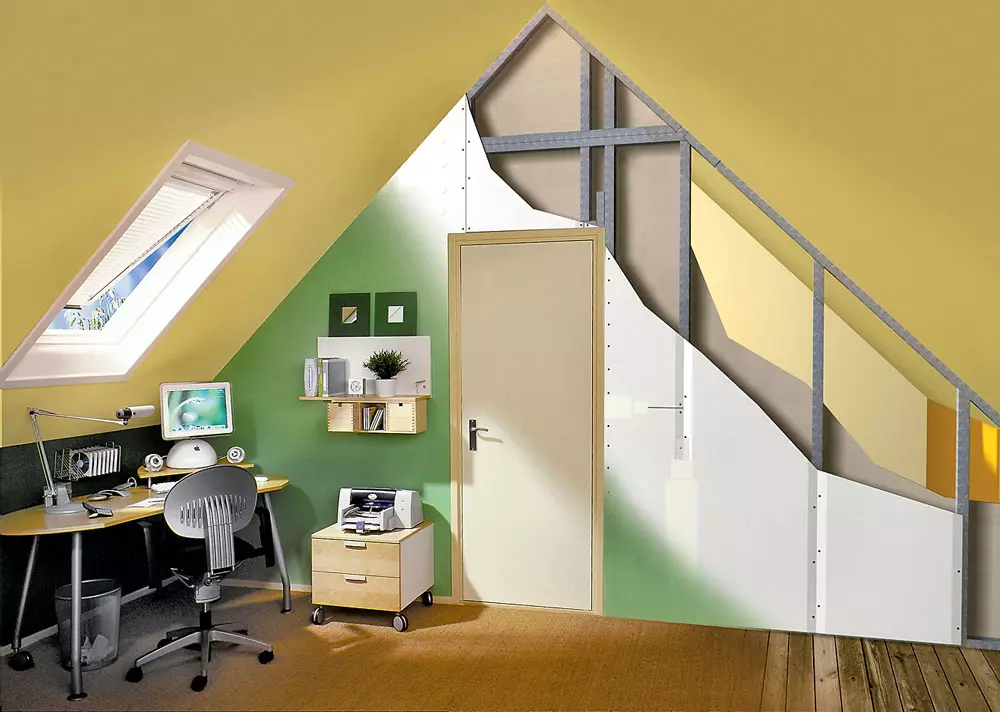
Photo: "Saint-Goben"
It is believed that it is impossible to hang anything on the walls and partitions from drywall. However, it is deeply mistaken. To quickly and reliably fix on the wall of any element, you need to use the appropriate fastener. But before proceeding to active actions, it is important to determine the weight of the subject. The fact is that the maximum load that one fastening element can withstand is fluctuated from 3 to 55 kg. For each case, you should select a dowel for the appropriate drywall. In our market, this product is represented by a variety of companies, among them: Fischer, Kew, Sormat, Mungo, Knauf, Nevsky Fasteners.
In the process of fastening items to trims from GLCs, you need to remember that the dowels are inserted only into the holes purified from dust and crumbs
To decorate the wall with a pattern, a decorative plate, a mask or other element weighing up to 3 kg, a usual jerpot for drywall without a dowel will help.For medium severity (mirrors, small shelves, large paintings in massive frames, hangers), a plastic or metal screw dowel is suitable or a dowel "Driva". It is screwed into the GLC scrap or screwdriver, and then screw the screws. A fastener with a screw dowel is withstanding the load to 6 kg with a single-layer drywall and up to 15 kg - with a two-layer. The price of a set (6 pcs.) The screw dowels (length is 39 mm) of fiberglass reinforced nylon bundled with screws - from 32 rubles.
In many cases, it is more profitable to build light interior partitions from the frame, on both sides of the drywall sheets of drywall, than to build structures of brick or concrete blocks. The speed of their installation is higher, and the mass is less. In addition, if necessary, such partitions can be quickly and easily dismantled. Facing the walls of plasterboard sheets allows you to level significant irregularities, as well as to do without the "wet" processes related to the use of masonry and plaster solutions. And the empty space behind the trim is easy to fill the insulating material, improving the sound and thermal insulation of the room.
With more impressive over the mass of objects and load up to 10 kg with one layer of plasterboard and up to 25 kg with two fasteners with a dowel "Butterfly". It is named so thanks to the side elements that are revealed as the wings, while turning the screw into the plastic sleeve and press it to the leaf of plasterboard from the reverse side, firmly fixing the test item. Price set (4 pcs.) Dowels "Butterfly" 10 × 50 mm made of polypropylene - from 13 rubles.
During installation, it is necessary to avoid excessive dowel tightening, especially when using a screwdriver
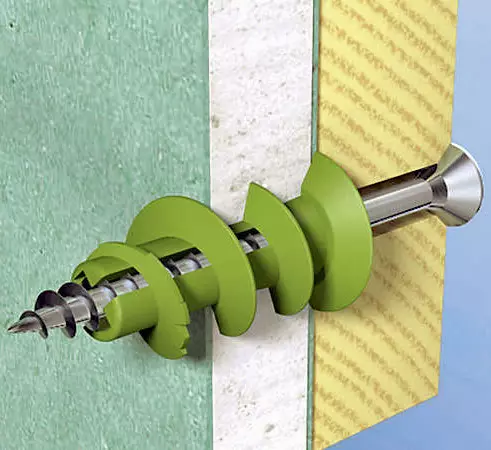
Photo: Fischer.
Dowel GK Green (Fischer) for GLC is made of environmentally friendly nylon. Acute thread edges provide reliable landing
Another popular dowel is "Molly", which because of the external similarity with a folded umbrella-cane is often called an "umbrella." The load allowed for fasteners of this type with a two-layer trim, reaches 35 kg. Pre-in the drywall is drilled by a hole with a diameter of 8-10 mm, and then insert a dowel "umbrella". Thanks to the two teeth in the side, it grudges tightly to the GLC and does not turn. The screw is screwed into it with a scolder or screwdriver. As a result, on the inside, the fastener tightly presses the trim. Downce price (4 pcs.) Umbrella dowels from galvanized steel M4 × 32 - from 53 rubles.
What is a dowel?
A classic dowel is a plastic deforming sleeve. When the wall is installed in the wall, the hole corresponding to the diameter and the length of the dowel is inserted into the latter, and then screw the spacelone element into it: screw or bolt. It attracts the necessary item to the wall and at the same time cuts the dowel from the inside, which, in turn, fills the hole and is held in it due to friction, thereby ensuring the mounting. By the way, the first dowel called the wall plug was developed in 1910 by John Joseph Rolings.In 1911, the author filed a request to the Patent Office of London and in early 1913 received a patent. The dowel was a cylinder of jute fiber with a screw hole. After half a century, in 1958, the German engineer Arthur Fisher invented nylon sleeves under the direction of the threaded fastener. Earlier for these purposes at home, wooden choppers were used.
To securely fix heavy and volumetric items, the Knauf-Hartmouth dowel is used. The load on one dowel with a single-layer trim from drywall 12.5 mm is 35 kg, and with a two-layer - 55 kg! The cost of one dowel of Knauf-Hartmouth, consisting of metal and a plastic element with a screw (M5 × 60), - 90 rubles.
Under massive cabinets, bookshelves and similar products weighing up to 150 kg It is desirable to provide a two-layer drywall overlayer. Another way to solve the problem is to transfer a significant load on the carrying structure from steel profiles. For this purpose, it is often reduced by a step of racks with a standard 60 cm to 30-40 cm or use mortgage parts.
Installing Dowel Knauf-Hartmouth
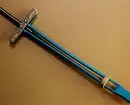
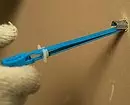

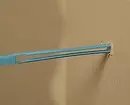
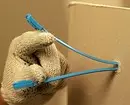
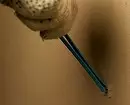
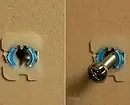
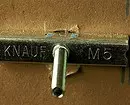
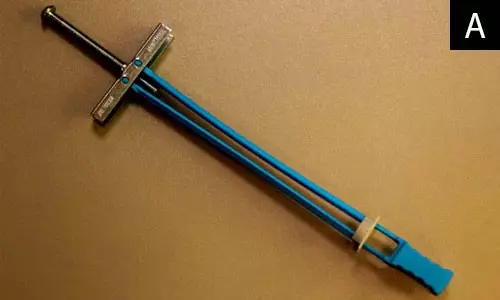
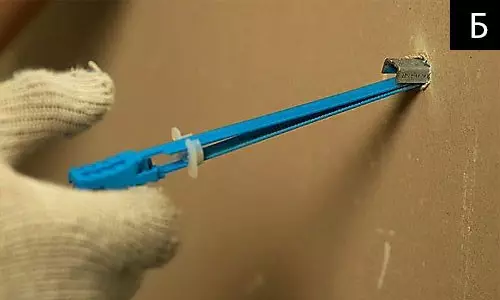
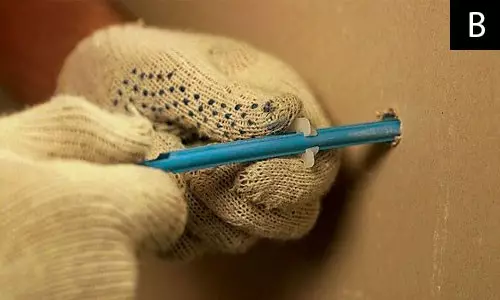
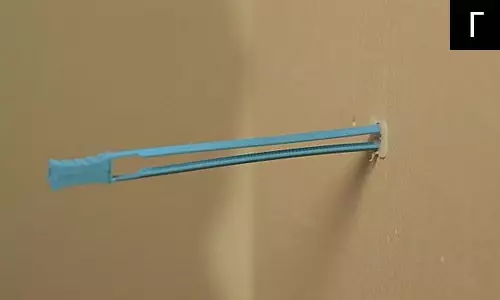
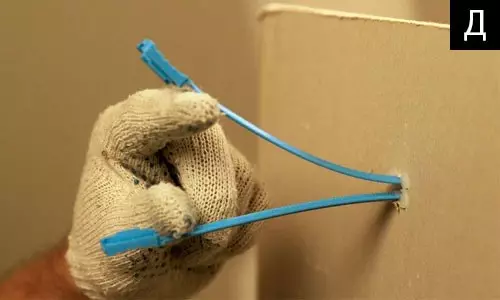
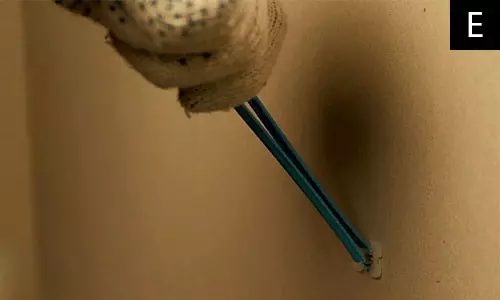
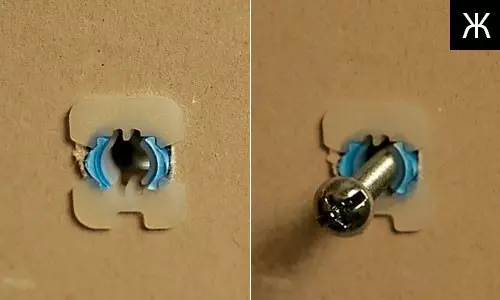
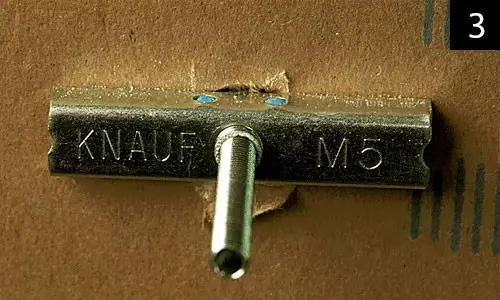
Dowel Knauf-Hartmut is designed for hollow structures, made of metal and a plastic element with a screw (M5 × 60) (a). The maximum thickness of the pinned object x = Lv is LC, where Lv is the length of the screw (60 mm), the thickness of the casing (mm), LC - the length of the attachment (15 mm). To install a dowel to a predetermined hole with a diameter of 13 mm using a mustache, a metal plate with threads in the center (b) is passed. After that, the plate is aligned and fixed fasteners with a plastic retainer (B - D). The mustache is laid down (e) and screw screw (g). The metal plate on the reverse side reliably holds the subject (s). If necessary, you can apply a longer screw M5
The diameter of the pre-drilled hole in the Hole must correspond to the diameter of the dowel, and its length is to exceed the length of the self-reserves for 5 mm
Light frame structures in most cases are not inferior in reliability to massive walls, so it does not need to be afraid to apply them. But it also needs to be understood that two-layer plasterboard sheathing assumes some loads, and one-layer - others. Hearing about wonderful fasteners, many are trying to hang onto the wall or partition with one layer of drywall countless items, sometimes very hard. And the results are often deplorable. Judge for yourself, the maximum load on the Knauf-Hartmouth dowel with a two-layer trim from Knauf-sheets is 12.5 mm (a total thickness of 25 mm) - 55 kg, and with one-layer - 35 kg. The difference is significant. Therefore, before starting repair, we should consider the layout, the placement of furniture. Then, for example, in the kitchen, in places where shelves with dishes will be placed (and their weight can exceed 50 kg), you can install mortgage elements and provide double trim. With a minor loss of a useful area due to two layers of the trim (25 mm thick), you will get a solid and reliable fastening of the subject without violating the monolith of the wall. Our company's specialists can offer several solutions for each case. The main thing is to follow their recommendations, comply with installation technology and choose the right fastener.
Dmitry Zureupa
Product Manager Company Knauff
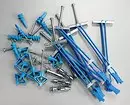

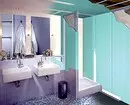
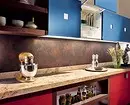
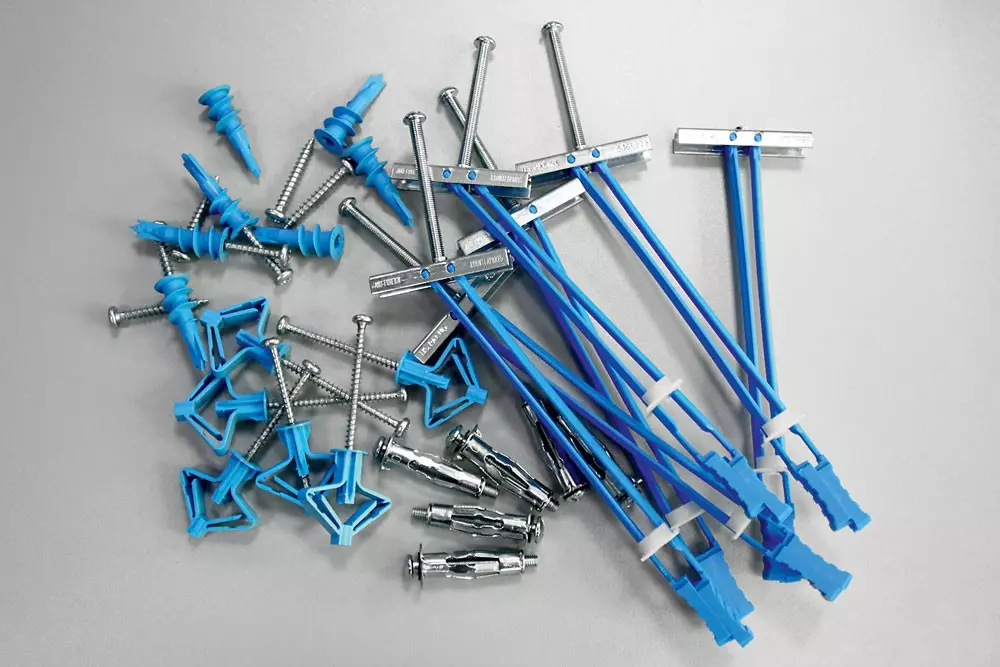
Metal and plastic dowels are used to fasten items to plasterboard of standard and high density (GPCV). The latter make from persistent to scattering and loss of form of polymers: nylon, polypropylene
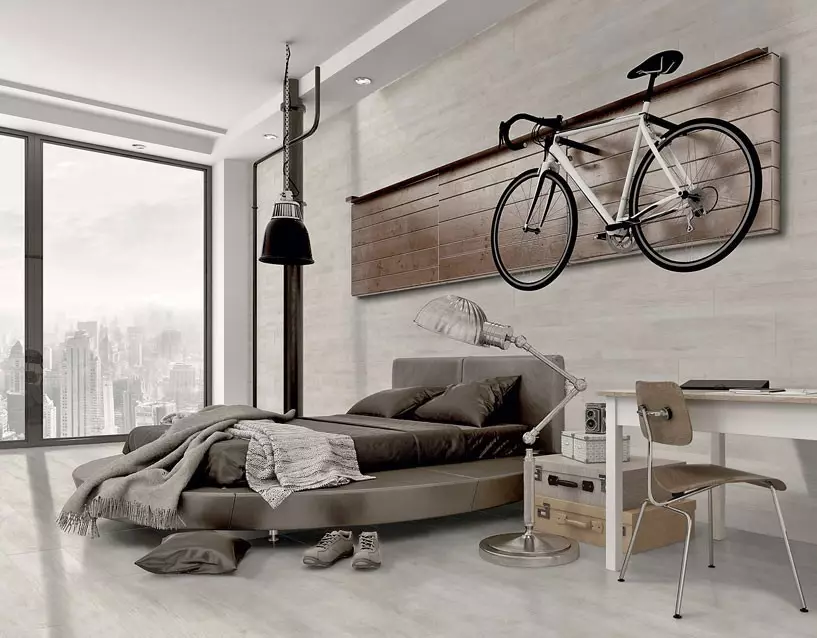
Mass of ordinary urban bikes are only 12-15 kg, and the weight of mountainbays for movement of off-road is 17-20 kg
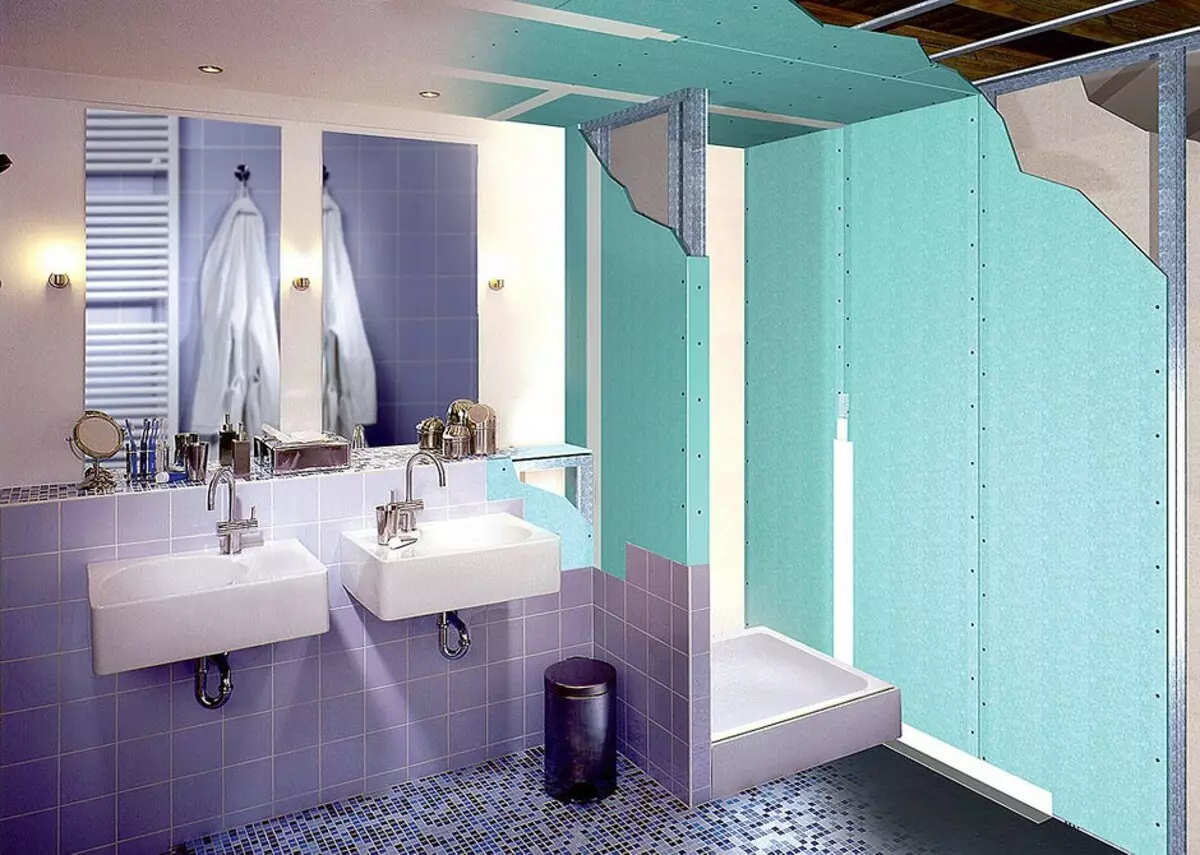
If necessary, consolidate plumbing equipment preferably take care of the installation of enhanced frames and travers
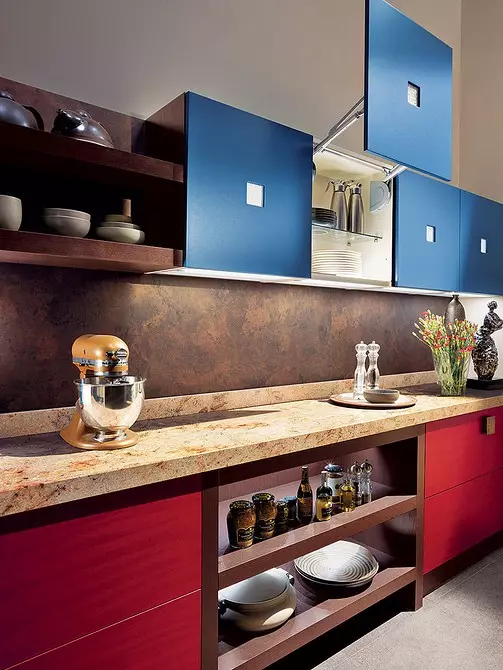
Hinged kitchen cabinets usually have two attachment points (sometimes more) - for the distribution of console load

